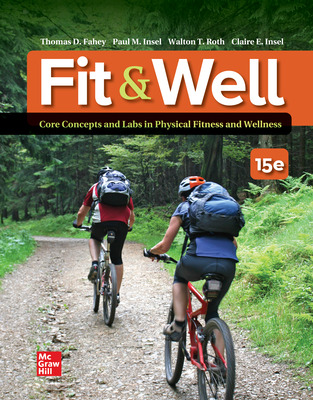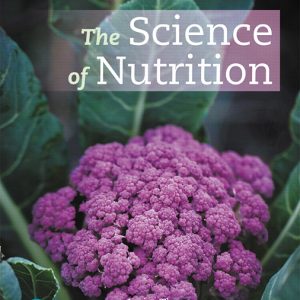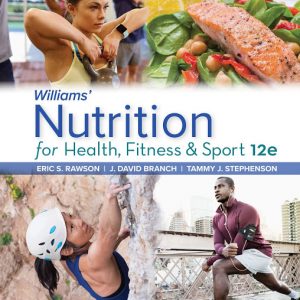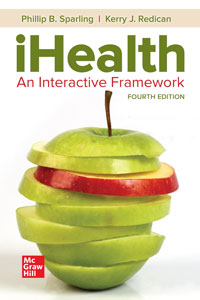No products in the cart.
Nutrition
 Loading...
Loading...
Fit & Well Core Concepts and Labs in Physical Fitness and Wellness 15th Edition By Thomas Fahey and Paul Insel and Walton Roth 2023 Instructors Manual
Fit & Well Core Concepts and Labs in Physical Fitness and Wellness
Fit & Well
( Instructors Manual)
Fit & Well Core Concepts and Labs in Physical Fitness and Wellness 15th Edition By Thomas Fahey and Paul Insel and Walton Roth 2023 Instructors Manual
Edition: 15thEdition
Author Name:Thomas Fahey and Paul Insel and Walton Roth
contact:
Whatsapp +1 (949) 734-4773
for the Facebook page click here
for more books for ( Test Bank and Solution Manual) click here
sample free
Chapter 1: Introduction to Wellness, Fitness, and Lifestyle Management
 Loading...
Loading...
$49.00 $90.00
Fit & Well Core Concepts and Labs in Physical Fitness and Wellness
Fit & Well
( Instructors Manual)
Fit & Well Core Concepts and Labs in Physical Fitness and Wellness 15th Edition By Thomas Fahey and Paul Insel and Walton Roth 2023 Instructors Manual
Edition: 15thEdition
Author Name:Thomas Fahey and Paul Insel and Walton Roth
contact:
Whatsapp +1 (949) 734-4773
for the Facebook page click here
for more books for ( Test Bank and Solution Manual) click here
sample free
Chapter 1: Introduction to Wellness, Fitness, and Lifestyle Management
Learning Objectives
After reading this chapter, the student should be able to:
- Describe the dimensions of wellness.
- Identify the major health and lifestyle problems in the United States today.
- Describe the behaviors that are part of a wellness lifestyle.
- Evaluate some of the available sources of wellness information.
- Create a behavior management plan.
Key Terms and Definitions
health Overall condition of body or mind and to the presence or absence of illness or injury.
wellness Optimal health and vitality, encompassing all dimensions of well-being.
risk factor A condition that increases one’s chances of disease or injury.
infectious disease A disease that can be spread from person to person; caused by microorganisms such as bacteria and viruses.
chronic disease A disease that develops and continues over a long period of time, such as heart disease or cancer.
lifestyle choice A conscious behavior that can increase or decrease a person’s risk of disease or injury; such behaviors include decisions regarding smoking, eating a healthy diet, exercising, and using alcohol.
health span How long we stay healthy and free from chronic or disabling disease.
physical fitness A set of physical attributes that allows the body to respond or adapt to the demands and stress of physical effort.
sedentary Physically inactive; literally, “sitting.”
behavior change A lifestyle management process that involves cultivating healthy behaviors and working to overcome unhealthy ones.
target behavior An isolated behavior selected as the object of a behavior change program.
self-efficacy The belief in one’s ability to take action and perform a specific task.
locus of control The figurative “place” a person designates as the source of responsibility for the events in their life.
self-talk A person’s internal dialogue.
Extended Lecture Outline
Introduction
Truly healthy people want optimal well-being rather than simply the absence of illness.
- Wellness: New Health Goals
- Generations of people have viewed health simply as the absence of disease.
- The word health typically refers to the overall condition of a person’s body or mind and to the presence or absence of illness or injury.
- Wellness expands this idea of health to include our ability to achieve optimal health.
- Although we use the terms health and wellness interchangeably, they differ in two important ways:
- Health—or some aspects of it—can be determined or influenced by factors beyond your control.
- Wellness is largely determined by the decisions you make about how you live.
- Wellness involves making conscious decisions to control risk factors that contribute to disease or injury.
- The Dimensions of Wellness
- Physical Wellness
- Your physical wellness includes not just your body’s overall condition and the absence of disease but also your fitness level and your ability to care for yourself.
- The decisions you make now—and the habits you develop over your lifetime—will largely determine the length and quality of your life.
- Emotional Wellness
- Your emotional wellness reflects your ability to understand and deal with your feelings.
- Emotional wellness involves attending to your own thoughts and feelings, monitoring your reactions, and identifying obstacles to emotional stability.
- Self-acceptance is your personal satisfaction with yourself.
- Self-esteem relates to the way you think others perceive you.
iii. Self-confidence can be a part of both acceptance and esteem.
- Intellectual Wellness
- Those who enjoy intellectual wellness continually challenge their minds.
- People who enjoy intellectual wellness never stop learning. They seek out and relish new experiences and challenges.
- Interpersonal Wellness
- Learning good communication skills, developing the capacity for intimacy, and cultivating a supportive network are all important to interpersonal (social) wellness.
- Social wellness requires participating in and contributing to your community and to society.
- Cultural Wellness
- Cultural wellness refers to the way you interact with others who are different from you.
- It involves creating relationships with others and suspending judgment on others’ behavior, as well as accepting, valuing, and celebrating the different cultural ways people interact in the world.
- Spiritual Wellness
- To enjoy spiritual wellness is to possess a set of guiding beliefs, principles, or values that give meaning and purpose to your life, especially in difficult times.
- Many people find meaning and purpose in their lives on their own—through nature, art, meditation, or good works—or with their loved ones.
- Environmental Wellness
- Your environmental wellness is defined by the livability of your surroundings.
- Access to nutritious food and physical safety in your neighborhood can have profound effects on environmental wellness.
- To improve your environmental wellness, you can learn about and protect yourself against hazards in your surroundings and work to make your world a cleaner and safer place.
- Financial Wellness
- Financial wellness refers to your ability to live within your means and manage your money in a way that gives you peace of mind.
- It includes balancing your income and expenses, staying out of debt, saving for the future, and understanding your emotions related to money.
- Occupational Wellness
- Occupational wellness refers to the level of happiness and fulfillment you gain through your work.
- Your occupational wellness depends on liking your work, feeling connected with others in the workplace, and feeling as though you’re learning something and making a contribution.
- New Opportunities for Taking Charge
- In the 19th and early 20th centuries, Americans considered themselves lucky just to survive to adulthood.
- Many people died from common infectious diseases and poor environmental conditions.
- By 2000, life expectancy had nearly doubled.
- While life expectancy has consistently increased in the United States each decade since 1850, the rate of improvement has slowed and, in some recent years, actually declined—even without factoring in the COVID-19 pandemic.
- Medical treatments may be reaching their limits in treating heart disease and in preventing other early deaths related to obesity.
- Heart disease and cancer, now the top two leading causes of death for Americans, are chronic diseases.
- Lifestyle choices can increase or decrease the risk of chronic disease.
- For young adults, healthy choices related to safety behaviors are critical, as injuries are the leading cause of death among those aged 15–24.
- The major difference between life span (how long we live) and health span (how long we stay healthy) is freedom from chronic or disabling disease.
- National Health
- Wellness is a personal concern, but the United States government has financial and humanitarian interests in it too.
- Health Insurance Options
- The 2010 Affordable Care Act (ACA), also called “Obamacare,” has remained in effect, although certain provisions have been altered.
- Finding a Plan
- Health exchanges provide a selection of government-regulated health care plans. Those who are below income requirements are eligible for federal help with premiums.
- Benefits to College Students
- The ACA permits young adults to stay on their parents’ health insurance plans until age 26.
- Young, healthy people may be tempted to buy a “catastrophic” health plan, but this may be risky if you select a plan that does not cover the ACA’s 10 essential benefits: outpatient care, emergency services, hospitalization, maternity care, lab tests, mental health and substance use treatment, prescription drugs, rehabilitative services and devices, lab services, and pediatric care.
iii. Students whose income is below a certain level may qualify for Medicaid.
- The Healthy People Initiative
- The Healthy People initiative aims to prevent disease and improve Americans’ quality of life.
- Healthy People 2030 sets the following overarching goals:
- Attain healthy, thriving lives and well-being free of preventable disease, disability, injury, and premature death.
- Eliminate health disparities, achieve health equity, and attain health literacy to improve the health and well-being of all.
iii. Create social, physical, and economic environments that promote attaining the full potential for health and well-being for all.
- Promote healthy development, healthy behaviors, and well-being across all life stages.
- Engage people across multiple sectors to take action and design policies that improve the health and well-being of all.
- The initiative continues to emphasize social determinants of health.
- Behaviors That Contribute to Wellness
- A lifestyle based on good choices and healthy behaviors maximizes quality of life.
- Be Physically Active
- Physical fitness is a set of physical attributes that allows the body to respond or adapt to the demands and stress of physical effort.
- A sedentary lifestyle is common among Americans.
- When our bodies are not kept active, they deteriorate: Bones lose density, joints stiffen, muscles become weak, and cellular energy systems degenerate. To be truly well, human beings must be active.
- The benefits of physical activity are both physical and mental, immediate and long term.
- Physically active people are less likely to develop or die from many chronic diseases, and as they get older, they may be able to avoid weight gain, muscle and bone loss, fatigue, and other problems associated with aging.
- Choose a Healthy Diet
- Many Americans have a diet that is too high in calories, unhealthy fats, and added sugars, as well as too low in fiber, complex carbohydrates, fruits, and vegetables.
- A healthy diet provides necessary nutrients and sufficient energy without also providing too much of the dietary substances linked to diseases.
- Maintain a Healthy Body Weight
- Overweight and obesity are associated with a number of disabling and potentially fatal conditions and diseases, including heart disease, cancer, and type 2 diabetes.
- Maintaining a healthy body weight requires a lifelong commitment to regular exercise, a healthy diet, and effective stress management.
- Manage Stress Effectively
- Over longer periods of time, poor stress management can lead to less efficient functioning of the immune system and increased susceptibility to disease.
- Learning to incorporate effective stress-management techniques into daily life is an important part of a fit and well lifestyle.
- Avoid Tobacco and Drug Use and Limit Alcohol Consumption
- Tobacco use is associated with 9 of the top 10 causes of death in the United States; personal tobacco use and secondhand smoke kill nearly 500,000 Americans each year.
- Excessive alcohol consumption is linked to 8 of the top 10 causes of death and results in about 95,000 deaths a year in the United States.
- Protect Yourself from Disease and Injury
- The most effective way of dealing with disease and injury is to prevent them.
- You can take specific steps to avoid infectious diseases, particularly those that are sexually transmitted.
- Take Other Steps toward Wellness
- Developing meaningful relationships.
- Planning for successful aging.
- Learning about the health care system.
- Acting responsibly toward the environment.
- Wellness Factors That Seem Outside Our Control
- Heredity, the environment, and adequate health care are other important influences on health and wellness. A sedentary lifestyle combined with a genetic predisposition for diabetes can greatly increase a person’s risk of developing the disease.
- Behavior can tip the balance toward health even if heredity or environment is a negative factor.







There are no reviews yet.